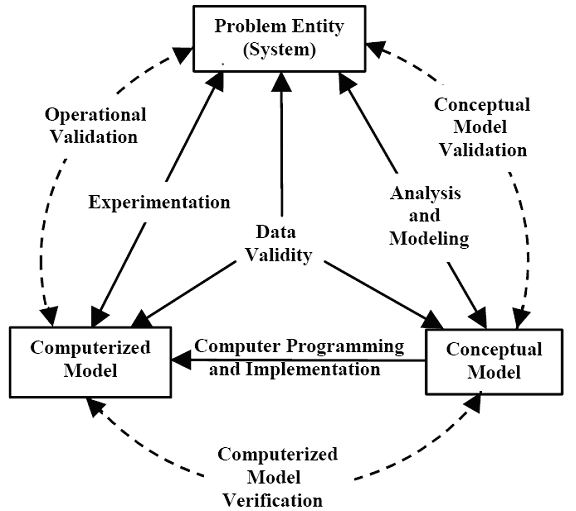基本概念
Simulation models are increasingly being used in problem solving and to aid in decision-making. The developers and users of these models, the decision makers using information obtained from the results of these models, and the individuals affected by decisions based on such models are all rightly concerned with whether a model and its results are "correct". This concern is addressed through model validation and verification.
Model validation is usually defined to mean "substantiation that a computerized model within its domain of applicability possesses a satisfactory range of accuracy consistent with the intended application of the model". Model verification is often defined as "ensuring that the computer program of the computerized model and its implementation are correct"----- Sargent(2004) 模擬已成為解決管理問題與輔助決策分析的重要工具,模擬模式與結果的正確與否不僅影響到模式的建構者、使用者、決策者、甚至決策所影響的員工與顧客,這就是模式確認與驗證的重要所在。 模擬的目標對象通常是實際存在的系統(real system),但是在分析前要先以文字敘述轉成概念模型(conceptual model),然後再以模擬軟體建構出模擬模式(simulation model)。Validation是驗證conceptual model的文字敘述是否與實際系統相符,而Verification是驗證模擬模式的程式內容是否與conceptual model相符。 |

 |
Revised 2006/1/1